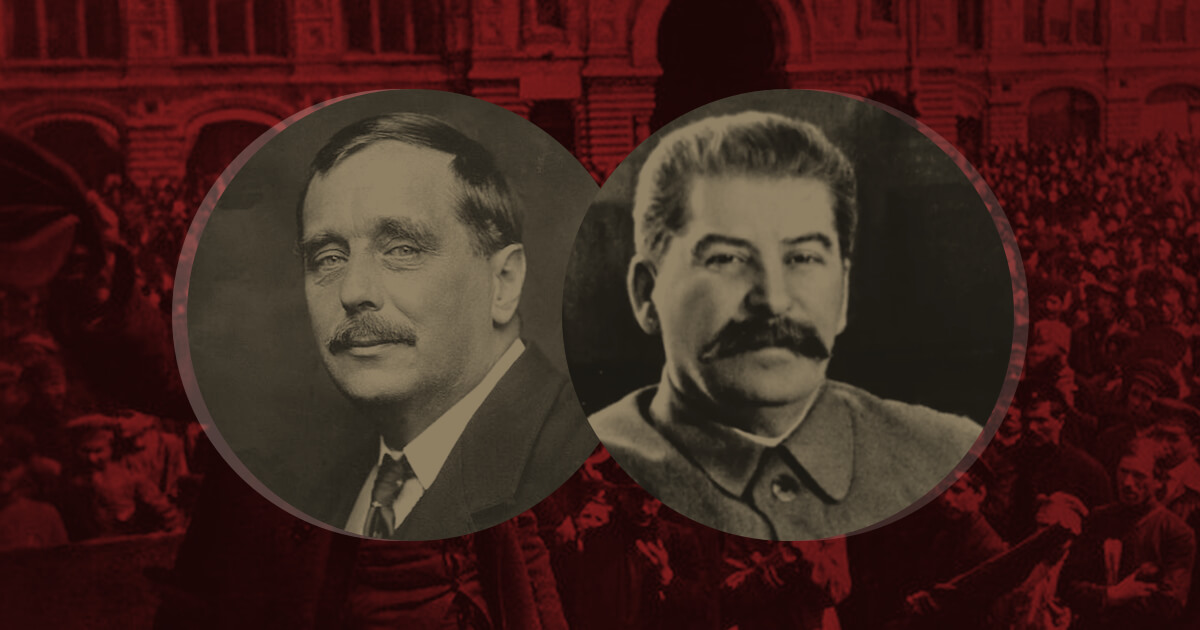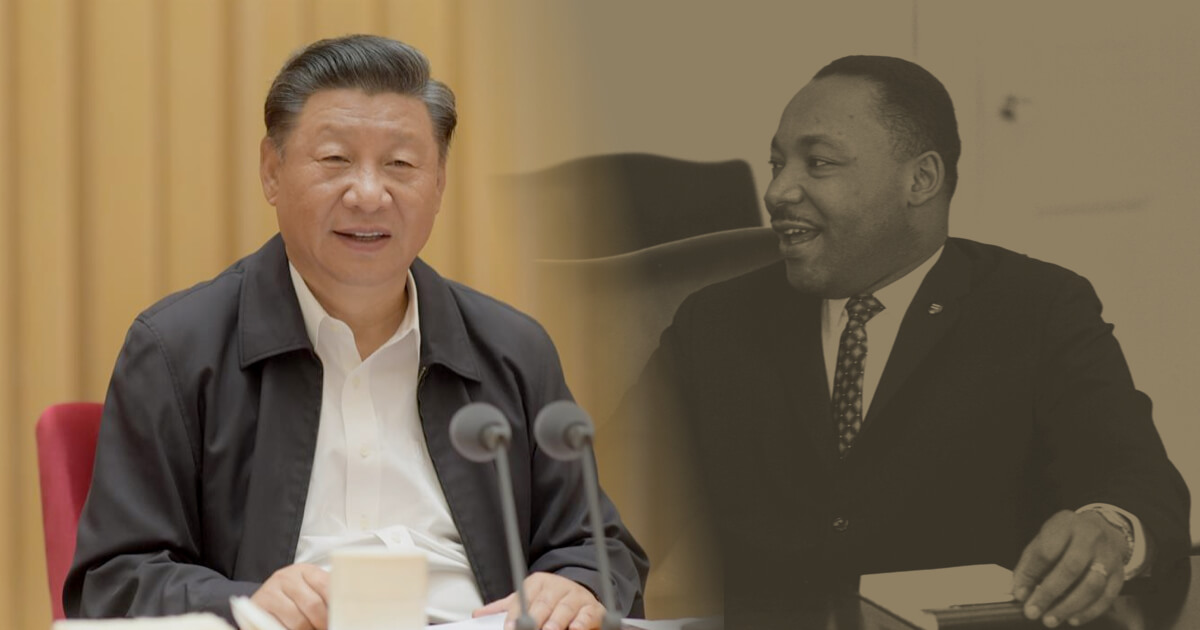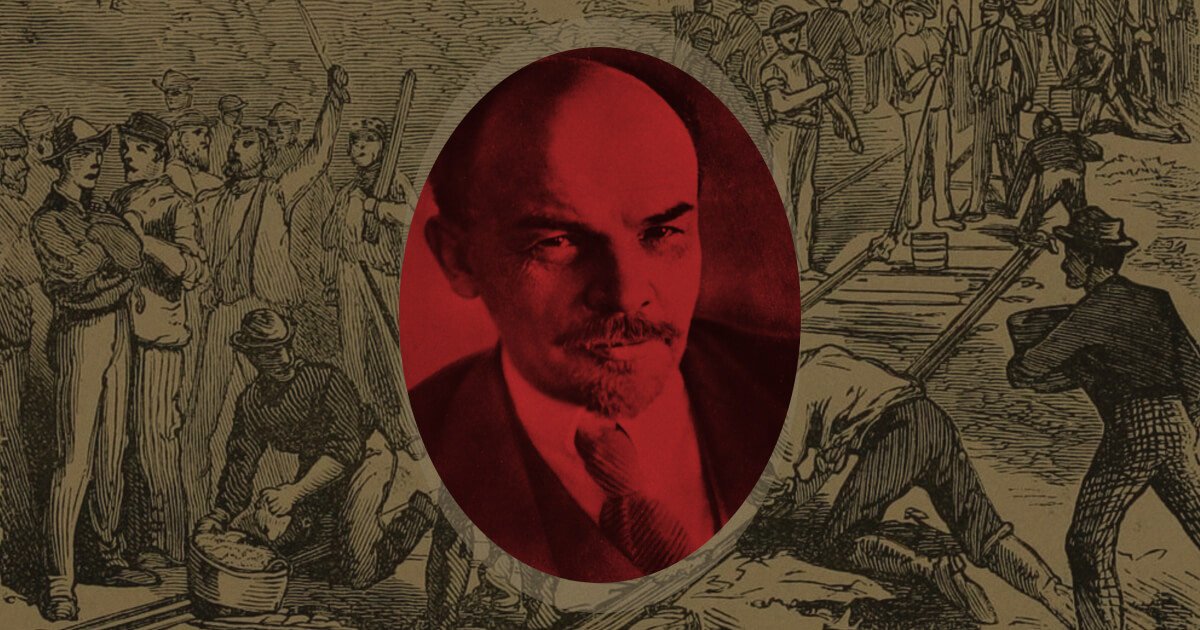Men and women who are trying to grasp Marxist-Leninist ideology and use these principles in their organizations and in their daily lives are faced with several difficulties in regard to the women question: our relationship to working class and petty-bourgeois women, which is in part our relationship to the recent women’s liberation movement, and our relationship to men and women cadre. Our desire to make revolution is thwarted by a lack of a communist understanding of the women question. We need to understand that complete emancipation of women will come only with the abolition of private property, and that the struggle for democratic rights for women will ease their special oppression and enable them to more fully enter the class struggle. In this way women will see that their source of oppression is class oppression.
Marxist-Leninist women and the women’s liberation movement
Among women involved in the women’s liberation movement, the objective conditions of women’s oppression were commonly felt and the willingness to struggle to change the conditions in their private and public lives became a source of strength. Generally there was and still is supportive criticism which leads to a gaining of confidence among these women as they consciously try to help each other overcome their automatic acceptance of male chauvinism. Women have often united in struggles against the male supremacist practices of the bourgeois state: especially lack of day care facilities, or different unions for men and women (Bell Telephone has one union for operators and another for men). Women have also helped each other gain confidence in dealing with male chauvinism as it is practiced by particular men in their private lives. These struggles overcome the feeling of helplessness that many women have.
The concern to help other women with the problems of their daily lives is a social concern, a realization that each member has something to contribute, and a desire to help each woman shed some of her reluctance or inability to struggle against the debilitating definition of women as the passive sex, competitors with each other for the approval of men, entirely dependent on men and the institutions of the state.
Content of women’s liberation
Some Marxist-Leninists may say, ”What’s so revolutionary about that?” The struggle against the bourgeois ideology of male chauvinism is revolutionary because it seeks to change one aspect of inequality in class society, that between men and women, and is part of the struggle to unify the working class against the capitalist class.
The fundamental cause of sexual oppression of women lies in class society, in the system of private property, and in the role of the patriarchal or bourgeois family in maintaining private property. The development of the bourgeois family as the economic unit of class society meant special oppression for women, who bore the children and did household labor while the man bore major responsibility in political, social and economic functions. Under capitalism the content of patriarchal family has changed radically; women have been brought into production and have many legal equalities that had been reserved for men in the past; they have taken a fuller part in the social life because they were brought into production through capitalism.
The family under capitalism is qualitatively different in the different classes. In the bourgeoisie, the family is the means of privately owning and holding onto the means of production and continued private appropriation of the labor of the working class. Among the working class–who own no means of production–the family has historically had a qualitatively different role and character. In the working class men and women mutually depend on each other for survival and for raising the children; the source of women’s oppression clearly comes from the capitalist society, which puts incredible burdens on the family.
The proletarian struggle to keep the family together for emotional and financial support, or the teaching of children how to deal with capitalist society has progressive aspects. The struggle of working class families reflects at all times the general conditions of the working class and the necessity of changing these conditions. In the course of sharpening class struggle the progressive aspects will be developed and become an increasing force in the solidarity of the working class, the liberation of women and the advancing of the class struggle.
The fundamental oppression affecting the majority of women is class oppression. Within this, the particularity of women’s oppression is based on the particular role that fell to women in the home and family (which was her social and economic role) the development of private property and class society. This particular historical condition of women has been that the woman in the home produces only use-value, while the man (and woman when she works) working in commodity production produces items that have exchange value. It is in this way that men and women have different relations to the processes of social production. All the work in the home is socially necessary labor, but it is used in the home. It never reaches the market place and there is similar to pre-capitalist production! When workers produce commodities that can be used but also exchanged, they take part in distinctively capitalist production and are paid in money for their labor. Hence this work is valued by society. Women work in the home, but are not paid in money, and their work is not valued by society as much because it is not in public view and does not produce capital. [Engels]
This different relation to the process of social production which marks woman’s history–stemming from the subjugation of women by private property and the attendant male supremacist super-structure and practices–still exists and is promoted and conserved by capitalism and the bourgeois class in a thousand ways. This is so despite the fact that the development of modern capitalism has drawn massive numbers of women into social productive processes. In fact, there is an increasingly sharp contradiction in the actual role of women especially working class women in social production now and the male supremacist ideology and practices of capitalist society. The poor working class women and men have always had a more equal relation to social production because women so often must labor outside the home. This is one source of the progressive aspects of the proletarian family. However, the social and economic position women, in all classes is still heavily stamped by the bourgeois function of the family in capitalist society, and will continue to be until the bourgeoisie is overthrown and private ownership of the means of production is abolished.
This oppression is part of the oppression of the working class by the bourgeoisie because all the socializing of children, which is the rearing of the working class of the future, is done without cost or responsibility to the ruling class. The preparation of meals, the care of clothes and comforts of the home, all of which take the edge off the alienation of workers under capitalism, fall in the category of women’s work. The bourgeois definition of women as homemakers serves as ideological basis for paying them low wages when they enter capitalist production. This ideology reflects the historical development of the family as it developed as part of class society, with a general down-grading of women’s work. This is used to divide the working class in all ways.
The great thrust of the struggles of American women, particularly since they entered commodity production, has been part of the class struggle against political, social, and economic oppression by the bourgeoisie: for lessening exploitation of the working class through fights against child labor, bad work conditions, low wages, and long hours. They are also striking at the bourgeois ideology that defines them as isolated wives and mothers, consumers of household goods, socializers of children, and sex gratifiers for men, while the economic conditions force them out to work to supplement the man’s earnings or provide for the children entirely when the man is not present. When they do get jobs they are the most menial, the jobs men refuse to do, and they get a lower wage for their work. The militancy that these forms of class oppressions generate is an obvious force towards class liberation.
In the struggles for reform in the present woman’s liberation movement, women come up against the profit motive of capitalism and all its state agencies. They can understand that there is the scientific means and labor power available and the potential within these forces of production for good child-care, for health care that would include birth control, for cheap and good meals outside the home, and for laundry service. There is no way to meet these demands of women without solving the demands of the working class as a whole. In fact, these are working class demands and have been and will be fought by the bourgeoisie as demands in the interests of the working class.
Today the welfare laws and the corresponding slave labor are particularly strong against women, who because of their responsibility for child-rearing are most plentiful on welfare rolls.
The special oppression that Black women face, both racial oppression and women’s oppression, gives them a clearer insight into the evils of capitalism, more experience in fighting against it, and a longer list of crimes of the bourgeoisie that can only be settled by revolution. Six children of working class families burned to death in a child-care center, a type common in Chicago, in early February 1972. These children were from Black families. Black women with children under school-age are proportionately a much larger group than white women.
As awareness of these class contradictions in the women’s liberation movement grew, the consciousness of many women also developed and continued to develop that only a revolutionary change from private ownership to social ownership, from capitalism to socialism, will fundamentally change the status of all women, since revolution will fundamentally change the class relationships in society.
Struggle between two lines in the women’s liberation movement
Do all women’s groups agree with this analysis? No, there are basically two lines regarding women’s oppression. One is the line given above that leads women’s consciousness, or feminine consciousness, to revolutionary consciousness. The other line is that men, or men’s chauvinist attitudes, are the source of women’s oppression, and not the political-economic system of capitalism that fosters static and oppressive relationships. In action, groups of women that hold this line may seek reforms against sexist oppression that affect all classes, but they do not promote class revolution. Their main argument is that the overthrow of capitalism is almost irrelevant to women’s liberation. This is a bourgeois feminist point of view. It is feminist because it acknowledges the oppression of women; it is bourgeois because it views relationships between men and women as static and because it ignores the basic antagonistic relationship between classes: men have always oppressed women and always will. It is bourgeois because it does not advocate and fight for complete emancipation of women.
A dialectical materialist view of the oppression of women in different economic systems in history is that the oppression comes from the fundamental class oppression. Within this class oppression the particular oppression of women has been related to the development of the mode of production and the corresponding effect on the family as the economic unity in society. Under slavery, feudalism and capitalism, women’s material oppression through male supremacy in the economic structure is the basis for male chauvinism among men.
However, the productive forces and the contradictions in class society have developed sufficiently under capitalism so that it is possible for women to envision a change in their material conditions under socialism, under a system where the people control the productive forces. Birth control methods, child care, communal dining rooms, will be under the control of the working people; economic equality will become a fact. The social consciousness of men and women can then be changed in a qualitative mass way through ideological struggle and through a change in the material basis initiated by the masses and consolidated an guided by a communist party.
In Russia after the October Revolution of 1917, many liberating changes were made in socialized child care, equalized access to jobs and participation in political life. Since the Khrushchev clique has returned the Soviet Union to capitalism, the working class there has lost control, and the women’s struggles for democratic rights have been stymied and turned back.
Of these two aspects or political lines of the contradiction within the women’s liberation movement, the revolutionary aspect is rising, but the feminist aspect has been strong and organized, and led by the bourgeoisie. What Marxist-Leninist women need to do is strengthen the revolutionary class consciousness within the women’s movement whenever possible.
So-called Marxist-Leninist groups like the Socialist Workers Party, that have been very active in the women’s movement as in every mass movement, have increased bourgeois feminism because their line of raising one issue, like repeal of all abortion laws, has limited women’s consciousness to fight only for reforms. The relationship of women’s oppression to class oppression is not raised by these groups, and revolutionary consciousness does not grow through their leadership.
Relationship of communists to the women’s movement
We women have faced two difficulties in formulating a theory on the woman question. The primary reason is that a theory on the woman-question has to be part of the development of theory for proletarian class revolution and has to be fully formulated in the course of class struggle and the effort to build a Marxist-Leninist party. Although the efforts to understand the woman question have given many of us a better understanding of the question and have pushed us forward ideologically, we realize more fully now the limits of women trying to develop theory outside of a disciplined organization with practice in the working class.
The other difficulty that is related to the lack of communist organization and its attendant theory of the woman question is the male chauvinism that exists among Marxist-Leninist comrades. These two problems are definitely related; the bourgeois ideology of male chauvinism is encouraged by a lack of proletarian ideology to combat it at all levels. This chauvinism comes out in several ways in collectives: the most serious is the blatant dismissal of women in the group as potential or actual leaders or even as contributors of content worthy of discussion. Another is the dismissal in theory of the women’s movement and the woman question; another is the lack of men to struggle against aspects of male chauvinism among male comrades in collective meetings and outside of meetings in a principled manner, not in a capricious, individualistic, liberal manner. In practice, women who raise discussion about what women said at Tupperware parties are given less respect than men who integrate with the working class at the local bar.
The response to this male chauvinism within collectives is that Marxist-Leninist women, if they stay in collectives, see this lack of support as a “norm” and do not support each other in theoretical discussion of the woman question or other theoretical questions. Nor is much support given in the way of resolving contradictions a woman comrade may have in her “private” life, that is her life out of public view, causing these problems to be a real drag on her life and work with the masses. Some Marxist-Leninist women do not want to discuss these problems in their political perspectives since these problems are supposed to be “personal,” not political. There are no problems that are “personal”; all are political, some are in public view, some in private. All relationships have political meaning and should be dealt with in a principled way. Many women survived in such groups as a superwoman, not identifying with “women’s problems.” They have striven to be totally competent in competing with men on their “level.” Or they have been passive and supportive, with their ideas supporting and coming out as part of the men’s analysis; their political development has been totally encompassed by the men’s political development, or they have vacillated between these two positions. Essentially, many have been outside of the women’s liberation movement and are only now beginning to become aware of the depth of their own oppression and the support of other women in overcoming it, and the strength of the developing communist movement to deal with the question.
What are the primary tasks of Marxist-Leninists?
Creation of revolutionary theory must be done in the context of a communist organization practicing democratic centralism and basing its work in the working class and on the principle of the United Front in the work with the masses. Only a collective or organization that is actively engaged in struggles in the class can consistently make theoretical statements, based on using the mass line and on the principles of Marxism-Leninism-Mao-Tse-Tung Thought, test this out in class struggle, and then formulate the theory at a higher level.
The difficulty that many Marxist-Leninist women encountered was that they did not have communist organizations to further this theoretical work on the woman question. Therefore, we now see that the primary task of Marxist-Leninist women is that of the Marxist-Leninist men: to build a pre-party organization through integration with the working class that deals with the main strategic questions of a new party: how to link communism with the proletariat; how to formulate a correct party program on the international situation, the national question, and questions of the united front. Work on the woman question will be done at every level of these new communist organizations.
Ideological struggle between communist organizations,-emerging collectives, and individuals towards unity on the correct line for a new party is an essential element of building a communist party. This is opposed to a federative approach to party-building, which would merely unite different groups without the ideological struggle towards unity on the correct line. In our struggles to formulate collectives, organizations, and eventually a party, the dialectical materialist method is one we must become so familiar with that we can use it consciously and consistently. It is the correct philosophical outlook on the world, and the use of it serves the proletariat.
Dialectical materialism as a method applied to the woman question
There are several principles, or philosophical problems, of materialist dialectics. Since this philosophy is the basis of Marxism-Leninism, it is important that women and all Marxist-Leninists try to apply this method to the concrete problems that we face today. Mao Tse-Tung lists the principles (problems) in On Contradiction:
The problems are: the two world outlooks, the universality of contradiction, the particularity of a contradiction, the principal contradiction and the principal aspect of a contradiction, the identity and struggle of the aspects of a contradiction, and the place of antagonism in contradiction. (P. 23, ibid.)
The two world outlooks have been discussed briefly in relation to the two lines within the women’s movement, one a bourgeois feminist line, representing a metaphysical, or idealist, or static outlook. The dialectical outlook holds that change takes place because of the internal motion within a thing. The main internal contradiction that pushes women’s struggles forward is the class contradiction, the development of which pushes all society forward. Women are a part of the development of the forces of production under capitalism; they are also part of the relations to production-part of the class struggle.
The limitations of the capitalist system in providing for human needs was discussed above, showing the oppressive roles women occupy in the nuclear family or the patriarchal family, and the role of the nuclear family under capitalism. The particular contradiction women face under capitalism has to do with their pre-capitalist relation to production–their production of use value within the nuclear family. This particular contradiction both holds women back, and pushes them forward. It keeps some women in a backward relation to production similar to a feudal relation in the home. Hence their consciousness may have backward elements. However, as women enter capitalist production and as the class struggle sharpens, their continued oppression as women on the job and in the home makes them more aware both of the working class contradiction and women’s particular contradiction to capitalism. This special awareness has historically come out when class struggle has been sharp: the 1912 strike in Lawrence, Massachusetts, led by the IWW and Elizabeth Gurley Flynn, and the militant strikes in New York’s garment district in the early 1900’s where women took active part are but two examples. The struggle for bourgeois democratic rights for women was related to these working class struggles-for example, the right-to-vote struggle in the 1920’s.
In this decade and with this particular “women’s liberation movement” the chief external cause that has acted as a condition of change has been the rising struggles in the world of the oppressed nations against U.S. imperialism. The economic crisis with the U.S., caused by the resistance to imperialism, has caused special oppression of the working class and of women within the class. The rise in revolutionary consciousness in the world has also affected the consciousness of the American people in their struggle against U..S. imperialism. This is seen in the civil rights movement of the late 50’s and 60’s, the particular form of the contradiction between oppressed nations and imperialism. The anti-war movement and the student movement are responses to this crisis. These were essentially petty-bourgeois-led mass struggles against imperialism. Women took part in these movements and at times gave leadership and became conscious of their special oppression under imperialism. Also, after World War II many women went to college as the returning veterans took the jobs they held during the war in the factories and offices. After college, they faced discrimination in employment because of their sex. Their awareness of this lack of democratic .rights gathered through these movements pushed them forward to organize the “women’s liberation movement” of the late 60’s.
The leadership of women in revolutionary struggles of the oppressed nations has exerted influence on our women’s liberation movement here. All Marxist-Leninists and particularly women have much to learn from the women’s struggles in those countries, both in ideology and strategy, particularly since these struggles are led by the communist workers’ parties of those countries.
What we have to emphasize is that because subjugation of women has been a part of the universal class struggle, it was particularly severe and barbarously oppressive with the risk of private property and the system of slavery. Through every epoch–slavery, feudalism, capitalism–the material basis for oppression of women has been the preservation of private property. We must realize that it is only with the abolition of private property (factories, finance capital, etc.)–that is, a few families owning the means of production–that women will be emancipated. Struggles for reform must be supported and eventually led by communists, as a new party develops to give leadership, since women still lack full democratic rights. However, to focus only on reform and not on total emancipation through revolution, is the strategy of the “C”PUSA and of many well-meaning women in the women’s liberation movement. To not push for revolution means not being for complete liberation of women.
Many women have been pessimistic over the possibility of change in male-female roles under socialism, largely due to a lack of understanding of the class basis of all oppression. Women at this point need to affirm unity with men and women and struggle with each other to take part in the building of a revolutionary party, solidly based in the working class and guided by the most advanced theory, to overthrow capitalism and the set up socialism. Communist women cannot separate the building of a strong anti-imperialist Woman’s Liberation Movement from this struggle for state power. On the other hand, Marxist-Leninists should regard the task of developing a strong anti-imperialist woman’s movement seriously. Limited united front work can and in certain situations should be done now. The main aim of such work should be the consolidating of the working class line and women in the particular struggles by the advancing of a program that both corresponds to the specifics of the situation and builds an alliance between the struggle of the working class and the struggle of women for democratic rights. The limited united front work that can be done will be important in educating the working class to the needs and potential of women, strike blows at male chauvinism and the capitalist system that maintains it and advance class consciousness in the woman’s movement. We need a powerful woman’s movement led by working class women; this will emerge as the entire working class, led by the communist party, asserts leadership in the struggle against the ruling class.
The particularity of the contradiction of women’s oppression under capitalism
In striving to resolve the contradictions women face, the particular nature of women’s oppression under capitalism has to be understood by all revolutionary people. Communist organizations, with the purpose of forming a communist party, need to pay special attention to the question and how it comes up; especially the difficulty women have in relating directly to the class struggle when they do not have jobs outside the home. The discussion above about the nature of oppression with the nuclear family, and of the oppression of the nuclear family by capitalism, is a partial understanding of the particularity of women’s oppression.
More commonly understood are the many ways the ruling class makes extra profit from women workers by lower pay scales. Out of further investigation of real struggles women raise will grow programs or organizations to support women who do take part in class struggle and encourage all women to take a more active part. The primary reason the women question was not addressed by the “C”PUSA and the recent party, Progressive Labor, was because of revisionism, either by treating the question only as a matter of reform, or by liquidating the question altogether. Part of forming a correct program for revolutionary work with women will be defeating the revisionist position of the “C”PUSA and struggling against the liquidation of contradictions women face.
Publication of recent women’s Liberation movement material has been a major contribution in raising the question of the consciousness of women’s oppression and to a more limited extent, of class oppression. Much more work has to be done in studying the objective conditions and consciousness of working class women on the job and at home, in order to plan a program for leading struggles against those conditions.
A non-antagonistic contradiction women must deal with under capitalism is between men and women. The particular nature of women’s oppression as it is practiced by men needs to be resolved by a different method, as it is a contradiction among the people, and not a contradiction between the people (men and women) and the ruling class. In the philosophical essay, On the Correct Handling of Contradictions Among the People, Mao Tse-Tung says of the two types of contradictions: Since they are different in nature, the contradictions between ourselves and the enemy and the contradictions among the people must be resolved by different methods. To put it briefly, the former are a matter of drawing a clear line distinction between ourselves and the enemy, and the latter a matter of drawing a clear distinction between right and wrong, (p.82, op. cit.)
Working men and women both have as their enemy the ruling class, and so must unite to overthrow that class. In dealing with their non-antagonistic contradiction, a different method, a democratic method, must be employed, whereas in dealing with their common enemy, a clear line between the people and their enemy must be drawn. Since unity among men and women, black and white and other nationalities, is necessary for the overthrow of the bourgeois state, it is important that we give the contradictions among the people careful analysis. It does not mean that women abandon the struggle against male chauvinism among comrades or among the people; it means unity built on struggle.
This democratic method of resolving contradictions among the people was epitomized in 1942 in the formula “unity, criticism, unity.” To elaborate, it means starting from the desire for unity, resolving contradictions through criticism or struggle, and arriving at a new unity on a new basis. In our experience this is the correct method of resolving contradictions.
Male chauvinist attitudes are based on bourgeois ideology of male supremacy, and type women as mothers, servants, and sex objects. When men with jokes, remarks, or actions restrict women to relate primarily to them in these roles rather than as equals in the class struggle, they hold back the women’s participation in class struggle and class struggle itself. The more blatant forms of chauvinism women have toughened themselves to, but the jokes are still degrading and the catcalls from passing cars still strike a note of fear, especially when a woman is alone. The rapes and sexual crimes perpetrated on women are not even news items, because the incidents are so common. For many women, these experiences are not dealt with in a political context, and serve as the basis for a fear and suspicion of all men. The liberal types of chauvinism (based on passive rather than active support for their democratic rights) are harder to detect and deal with–for example, not actively encouraging women in collectives to do theoretical work and assume leadership. These liberal but nevertheless chauvinist responses tend to trap women into dealing only with the secondary contradictions in their lives and not the principle one in society at large, the class contradiction.
In analyzing the particularity of the contradiction women face with men, we need to look at both aspects of the contradiction.
In order to reveal the particularity of the contradictions in any process in the development of a thing, in their totality or interconnections, that is, in order to reveal the essence of the process, it is necessary to reveal the particularity of the two aspects of each of the contradictions in that process, otherwise it will be impossible to discover the essence of the process. This likewise requires the utmost attention in our study. (Mao Tse-Tung, p.39, ibid.)
The other aspect or the dialectic of the oppression of women by the class enemy in the ideas they peddle about women is the effect these male supremacist ideas have on men. Their ability to see women as they really are or to see women’s potential to develop is severely hampered. Slogans such as “Women can do anything men can do,” and “Women hold up half the sky,” help men and women both focus on the objective world, and on the present strength women have as well as their potential strengths. When men don’t focus on the objective world and don’t fight for equality of women, they expect themselves to live up to the tough lover role in the Sylva Thins or Marlboro ads. These false expectations increase subjectivity, because they are based on an idealist, or static world outlook. Often men pit themselves against other men in trying to live up to these roles, and this keeps them from being comrades. Chauvinism weakens class consciousness, because it focuses on the sexual differences and not on the class unity, mile men’s lives are definitely affected in a bad way by the tale supremacist economic structure, and by the chauvinist attitudes they act on, in the antagonistic contradiction between women and the ruling class and the non-antagonistic contradiction between men and women, women definitely suffer the hardest blows.
Because of their familiarity with the oppression and because it cripples their ability to contribute to the class struggle, women have the most responsibility to initiate the struggle over male chauvinism within revolutionary collectives, but all communists are responsible for struggling against this poisonous bourgeois ideology. Women especially need to struggle against bourgeois feminism, both within themselves and among other women. Bourgeois feminism is a widespread spontaneous response to male chauvinist attitudes and practices. Unless struggled against, these bourgeois feminist responses will weaken the world outlook of women in all areas of their work and life because they liquidate the class basis of unity which is the only basis for effectively combating male chauvinism. This is because only this point of view keeps politics in command and provides an objective basis for resolving contradictions in a revolutionary manner that advances the fighting capacity of women and the class struggle as a whole.
In applying dialectics to the women’s question in the U.S. there is a problem which we need to deal with, namely, the principal contradiction and the principal aspect of that contradiction.
The oppressed nations on the one hand and U.S. imperialism and Soviet social imperialism on the other constitute what has been the principal contradiction for the world’s peoples. This principal contradiction influences all other contradictions, including the principal contradiction within this country, which is the class contradiction. This contradiction between the working classes and the bourgeoisie has intensified because of U.S. imperialism’s defeat by the Indo-Chinese people.
Within each aspect of the class contradiction there are contradictions, each with its particularity and principal aspects.
The proletariat is one aspect, the bourgeoisie is the other aspect. The bourgeoisie is the principal aspect now, that is, they have the dominant position. The proletariat is on the rise, and will be the dominant aspect after the revolution.
Within the proletariat there are contradictions; the principal contradiction is between the communist movement and the masses. Until this contradiction is resolved, by uniting communism with the class, the proletariat cannot move decisively forward. At this time, the masses are the principal aspect, with the communist movement the aspect on the rise. What that means in terms of class struggle, is that the spontaneous mass movements are more prominent than communist led struggles.
This contradiction can be solved by the communist movement uniting communism to the class through building a communist party rooted in that class. The revisionism of the “C”PUSA has separated communism from the class, therefore struggle against revisionism and the “C”PUSA is a part of that struggle to unite communism to the class.
As this development takes place, the rising working class aspect will affect the women’s struggles more and more. Within the recent Women’s Liberation Movement, the revolutionary leadership of the working class was not there, and the movement could not progress beyond its petty-bourgeois ideology of reformism, here again supported by the “C”PUSA, and therefore did not advance. However, this movement did accomplish some reforms and did affect the social consciousness of many women and men.
The intensification of the class struggle and the rise of the proletarian aspect has affected the woman’s liberation movement, which had a big anti-imperialist left wing. The petty-bourgeois feminist point of view has proven an inadequate basis for linking struggle of petty bourgeois women to working class women. The petty-bourgeois mass women’s movement has been stymied and heavily diverted into bourgeois channels. These developments have led many sincere revolutionary feminists who are consistent democrats–i.e. who view the woman question from the point of view of the liberation of all women, especially working class women–to break with bourgeois feminism and adopt the stand of working class. They have recognized that only under the leadership of the working class can women mobilize their struggle against their particular oppression and aim the main blow at their main enemy, imperialism and the bourgeoisie, the bulwark and propagator of woman’s oppression.
Two aspects of a contradiction exist together; that is their unity. Each is the condition for the other’s existence, and each transforms into the other. War is transformed into peace, peace into war. The oppressed classes in feudal society became the oppressor classes in capitalist society. The bourgeois is now the ruling class; under socialism, the proletariat and the people will rule, and the bourgeois will be oppressed. The dictatorship of the proletariat will prepare for the eventual abolition of this dictatorship. This concept of the unity of opposites, and under certain conditions, the change of opposites, is the Marxist world outlook of materialist dialectics.
Some people can see the opposites, but not the change. For instance, some people see classes, the rich and the poor, as something that always was and always will be. They do not see the qualitative change from one epoch to another in history. As it affects some women, they accept the static thinking that men have always oppressed women and always will. Although like the “C”PUSA, they may try to change women’s lot in some quantitative way. The “CP” does not fight for qualitative changes, that is how they do not uphold a dialectical materialist world view. The ”CP” does not fight to develop working class leadership of women struggles and does not link the struggle for reform to the revolutionary tasks of women, of the working class and all oppressed peoples. They abandon the revolutionary task of overthrowing the Bourgeoisie and its state apparatus in favor of the path of reform as the road to change. This illusory reformist position inevitably and opportunistically strengthens bourgeois feminism just as it deprives women of a sound class point of view for their waging struggles against their oppression. This way it also undermines woman’s ability to struggle in a principled way–on the basis of class unity–against the practice of male chauvinism and thus weakens their revolutionary initiative.
Within the unity of opposites, there is struggle. The unity is temporary, the struggle is absolute, just as motion is absolute. In society, in class struggle, quantitative changes take place, sometimes hardly noticeable changes. Qualitative changes are very noticeable when enough small changes have occurred, and usher in the new stage in the development of a thing. The communists and the people, although not united yet, are making steps toward the revolution, the qualitative change from capitalism to socialism. The ideologies for change are reform versus revolution. The reformist ideology sees only the quantitative and rejects the qualitative, and tries to prevent qualitative changes from taking place. In practice the qualitative change we are struggling for now is the political education and consolidation of the proletariat and the development of its revolutionary leadership in all areas of mass struggle. The concrete meaning of this is the linking of communism and the working class movement; building a revolutionary communist party that can release the initiative of the working class and correctly guide the masses to victory. Revolutionary ideology seeks to further the qualitative changes, fosters them and consolidate them when they have taken place. Reform takes place as a by-product, or as a secondary change, within the qualitative change toward revolution.
For women, the struggle against bourgeois restrictions on them, in the culture and in the economic life, is constant under capitalism, and will be until classes are not in existence under communism. But there will be a qualitative leap, a fundamental change in the struggle against the old ideology of male supremacy in the revolution for socialism, and in the economic and political structure of socialism.
Antagonism has a place in resolving contradictions. At a certain stage, antagonism or revolution moves the resolution of the contradictions forward by creating whole new conditions for resolving them. That is why communists advocate and plan for revolution.
Originally published in Proletarian Cause, September 1972. Republished under a CC BY-SA 2.0 license. Photo credit: WikiMedia Commons (CC BY 2.0), Flickr (CC BY-NC 2.0), Flickr (CC BY-NC-ND 2.0), WikiMedia Commons (CC BY-SA 4.0).














